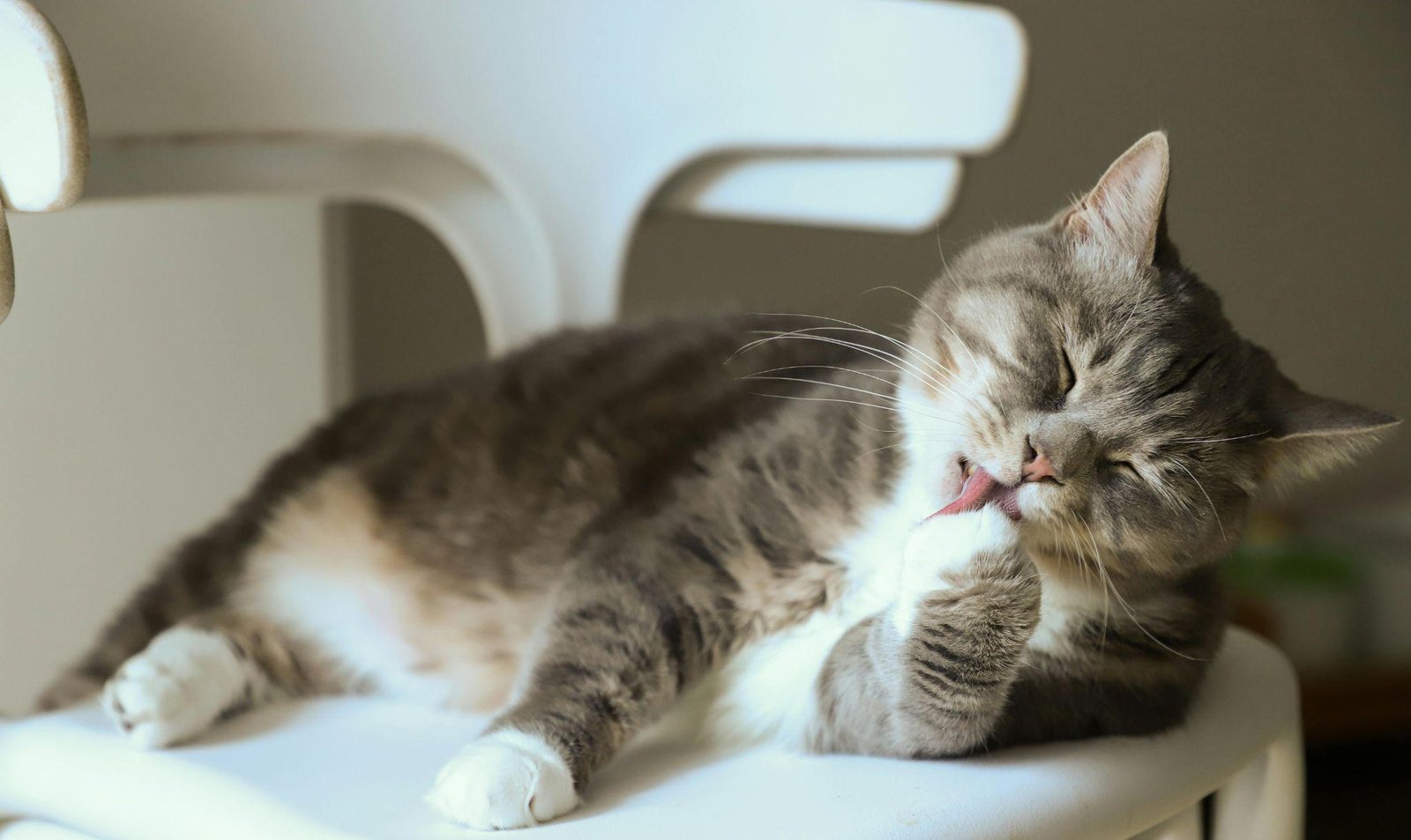
Cats are famously clean, thanks to their meticulous grooming rituals. It seems whenever our cats find a spare moment, they immerse themselves in fastidious cleaning. But is this habit always beneficial? Sometimes, the answer lies in a grey area.
Overgrooming, a condition where a cat licks and cleans beyond what’s needed for hygiene, can signal underlying issues. This behavior often points to deeper health concerns and shouldn’t be brushed aside.
Understanding Normal Grooming Behavior
Cats are natural groomers, devoting a hefty portion of their day to self-cleaning. This instinct emerges early, often learned from their mothers. Grooming involves using their tongue to sweep through their fur, keeping their coat clean and tidy.
Benefits of Grooming
Grooming holds several benefits for cats. It clears away loose fur, reducing the likelihood of hairballs. The act also spreads natural oils across their coat, lending it softness and shine. Additionally, grooming rids the fur of dirt and parasites, maintaining overall cleanliness and health.
What is Overgrooming?
Overgrooming happens when a cat obsessively licks, bites, or chews at its fur, leading to visible damage. This behavior strays beyond routine grooming and may result in bald patches, inflamed skin, or even sores.
Common Signs of Over Grooming
Indicators of overgrooming include hair loss, irritated skin, and the appearance of raw spots. Cats might develop reddened areas due to relentless licking. Recognizing these signs early can alert pet owners to potential problems.
Causes of Overgrooming
Medical Causes
Various medical conditions can spark overgrooming. Allergies rank high, leading to persistent itching that drives excessive grooming. Parasites like fleas or mites can torment the skin, pushing cats to lick compulsively. Additionally, skin infections or hormonal imbalances may underlie this behavior especially for cat breeds like Maine Coons or Himalayans.
Behavioral Causes
Behavioral factors also weigh heavily in overgrooming. Stress, anxiety, and boredom often play a role. Disruptions in routine, insufficient stimulation, or tension with other pets may trigger excessive grooming as a coping mechanism.
Environmental Factors
Environmental shifts, such as moving to a new home or introducing a new pet, can stress cats and spark anxiety. These disruptions can disturb their routine and sense of security, leading to overgrooming as a response to the newfound tension.
Diagnosing Overgrooming
Veterinary Examination
When a cat shows signs of overgrooming, a veterinarian will thoroughly examine the cat to uncover any underlying medical issues. This may involve checking for skin infections, parasites, or allergy indicators. Diagnostic tests, like skin scrapings, bloodwork, or allergy tests, help pinpoint the root cause.
Behavioral Assessment
In addition to a medical checkup, a veterinarian or pet behaviorist will evaluate the cat’s habits and environment. They’ll observe daily routines, interactions with other pets, and recent changes in the surroundings. Pinpointing stressors is essential for understanding why the cat is overgrooming.
Treatment and Prevention
Medical Treatments
Treating overgrooming begins with addressing any underlying conditions. For allergies, medications like antihistamines or corticosteroids may be used. Parasites are tackled with flea treatments or dewormers. Infections often require antibiotics or antifungal solutions.
Behavioral Interventions
Easing stress and boredom is crucial in managing overgrooming. Interactive toys can engage the cat’s mind. A stable routine fosters a sense of safety. Creating cozy retreats like perches or hideaways lets the cat feel secure. Ensuring enough mental and physical activity can greatly reduce stress-driven grooming.
Environmental Enrichment
Upgrading the cat’s environment can curtail overgrooming. Adding scratching posts, climbing trees, and puzzle feeders keeps the cat engaged. Rotating toys and introducing fresh ones keeps things interesting. Allowing access to windows or bird feeders can also provide mental stimulation and prevent anxiety.
Conclusion
Cat owners should remain vigilant, observing their pets for signs of overgrooming and seeking veterinary advice if any unusual behavior arises. Prompt attention can prevent more severe health problems down the line. Your cat’s grooming habits might be whispering more than meets the eye—stay alert and listen.





